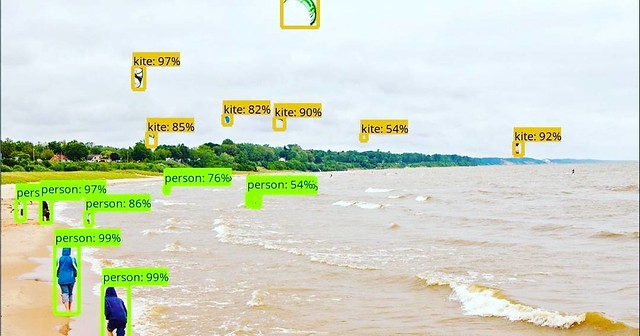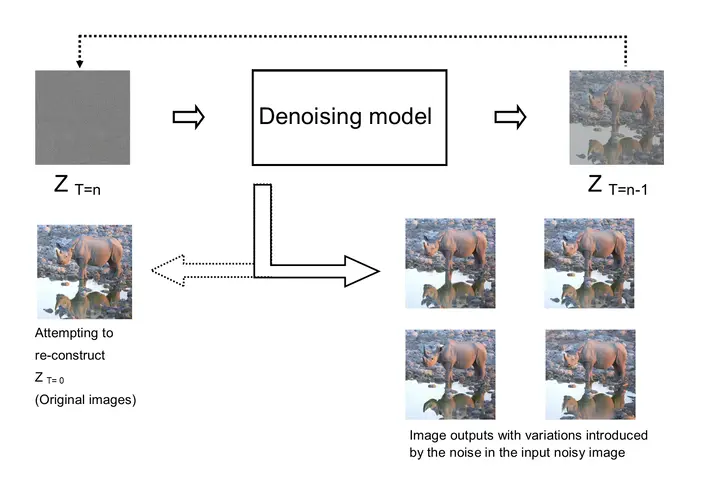In a world where pixels dance to the tune of algorithms and imagination knows no bounds, an intriguing frontier emerges – the realm of How Does AI Image Generation Work? It’s a place where AI wields its creative prowess, painting pictures that boggle the mind and challenge the very essence of artistry. Venture with us on this journey as we unveil the secrets of AI image generation, one brushstroke at a time.
Key Takeaways
- AI image generation harmonizes NLP, deep learning, computer vision, GANs, and diffusion models to transform data into art, redefining the creative landscape.
- Generative Adversarial Networks (GANs), orchestrating a dance between generators and discriminators, lie at the heart of AI artistry, conjuring images often indistinguishable from human creations.
- AI-generated art finds applications spanning entertainment, design, education, and healthcare, showcasing its versatility and real-world impact.
- Ethical considerations in AI image generation encompass the risks of deepfake misuse, biases in AI-generated content, complexities in copyright attribution, and debates surrounding privacy concerns.
Understanding the Basics: How Does AI Image Generation Work
The Pixel Playground
Images are intricate puzzles composed of minuscule building blocks known as pixels, each carrying a distinct color value. AI leverages these pixels as its creative palette to construct visually striking masterpieces.
Neural Networks: The Brains Behind AI

At the heart of AI image generation lie neural networks, inspired by the intricate architecture of the human brain. These networks consist of interconnected nodes, or neurons, which process and manipulate information, serving as the digital artist’s canvas.
Data is The New Oil
Training the AI
To breathe life into images, AI hunger for knowledge. It craves vast datasets filled with examples of the images it aspires to create. These datasets serve as the AI’s mentors, imparting the wisdom it needs to craft captivating visuals.

Natural Language Processing (NLP): The Linguistic Conductor
Imagine describing a “lush, moonlit forest” to AI. NLP assumes the role of the linguistic conductor in AI image generation, translating poetic descriptions into numerical representations of colors, textures, and emotions. Each word becomes a brushstroke guiding AI’s creative hand.
Fun Fact: “In 2021, OpenAI’s DALL-E made waves by generating images from textual descriptions, opening new frontiers in AI-driven art.”
Deep Learning: The Artistic Neural Network
Deep learning serves as the artistic neural network underpinning AI image generation. Inspired by the human brain, these networks comprise interconnected layers that refine input data. When fed with artistic principles and extensive image datasets, deep learning models begin unraveling the essence of art.
“Deep learning is the canvas upon which AI paints its digital masterpieces.” – AI Art Aficionado
Computer Vision: The Eye of AI

For generating images, AI requires a discerning eye, and this is where computer vision steps in. Computer vision equips AI with the ability to perceive and interpret the world through pixels. It detects patterns, identifies objects, and comprehends spatial relationships, mimicking how an artist views the world.
Generative Adversarial Networks (GANs): The Creative Duet
Picture GANs as creative rivals: a generator and a discriminator. They engage in a relentless duel, pushing the AI to refine its skills continually. The generator produces images, while the discriminator evaluates them, fostering an evolutionary artistic process.
“GANs are the most interesting idea in the last 10 years in machine learning.” — Yann LeCun
Generator: The generator’s job is to create fake images from random noise. It keeps improving its output to make it as realistic as possible.
Discriminator: The discriminator’s role is to distinguish between real and generated images. It continually learns to be a better detective.
The Adversarial Game: GANs work by pitting the generator against the discriminator. This adversarial game forces the generator to produce increasingly convincing images, while the discriminator becomes better at spotting fakes.
Diffusion Models: The Gradual Revelation

Enter the realm of diffusion models, where the creative process unfolds gradually. These models commence with a base image and, akin to a painter adding layers of detail, refine iteratively. With each iteration, the image becomes more intricate and coherent.
Fun Fact: “Diffusion models have been used to create high-resolution images that blur the line between AI and human artistry.”
- Content Loss: This measures the difference between the generated image and the desired content, ensuring the image aligns with the description.
- Style Loss: Style loss considers the artistic style of the image, ensuring that the generated image captures the desired aesthetics.
- Total Loss: Total loss combines content and style loss to optimize the generated image during the training process.
Check Out Best 6 AI Anime Generator With Pros and Cons 2023
The Magic of Style Transfer
Style Transfer Algorithms
AI isn’t confined to a single artistic style. It can blend and reimagine styles from the world’s greatest painters, turning ordinary photos into mesmerizing artworks. This enchanting process is known as style transfer.
Fun Facts
- The first computer-generated image, a 176×176 pixel letter ‘A,’ emerged in 1957.
- The term “Neural Network” was coined in a 1943 paper by Warren McCulloch and Walter Pitts.
- GANs, the creative powerhouse of AI image generation, made their debut in 2014, introduced by Ian Goodfellow and colleagues.
- Autoencoders possess versatile applications, extending beyond image generation to tasks like data denoising and dimensionality reduction.
The Big Players in AI Image Generation
NVIDIA: The GPU Pioneers
NVIDIA stands as a towering giant in the realm of AI image generation, heralding the revolution with their powerful Graphics Processing Units (GPUs). These GPUs provide the computational muscle required for AI to undertake complex tasks, including image generation, with astounding efficiency.
OpenAI: Pioneering GPT
OpenAI has consistently pushed the boundaries of AI image generation. Their GPT models, originally designed for natural language processing, have ventured into the world of visual creativity, crafting stunning images and artworks that challenge conventional notions of human-AI collaboration.
MidJourney: Bridging the Imagination Gap
MidJourney, a rising star in the AI image generation landscape, has harnessed the power of diffusion models to bridge the imagination gap. Their innovative approach enables AI to create images that are both astonishingly realistic and profoundly imaginative, captivating artists and enthusiasts alike.
Stable Diffusion: The Rock-Solid Foundation
Stable Diffusion stands as a stalwart foundation in AI image generation. Their research has paved the way for increased stability and reliability in generating images, making AI’s creative output more consistent and awe-inspiring.
The Ethical Issues: Navigating Challenges with Responsibility
However promising AI image generation may be, it has ethical challenges:
Deepfake Dilemma: Misusing AI-generated content, such as deepfakes, raises concerns about deception and misinformation.
Bias Brushstrokes: AI models can inherit biases from their training data, perpetuating inequalities in their creations.
Copyright Complexity: Determining the ownership and copyright of AI-generated images remains a complex issue.
Privacy Portraits: AI can generate images of individuals without consent, sparking privacy debates.
Conclusion
The future of AI image generation is an uncharted canvas filled with boundless potential. As AI models evolve, we can anticipate even more realistic, context-aware, and emotionally resonant creations. It’s a journey into the unknown, where imagination and technology continue redefining creativity’s boundaries.
FAQ:
Q1: How does the AI image generator work? AI image generation involves the use of neural networks, particularly Generative Adversarial Networks (GANs) and diffusion models, to create images. These networks learn from large datasets and generate images by transforming random noise or input data into visually compelling artworks.
Q2: What is the AI algorithm for image generation? The primary algorithms used in AI image generation are GANs (Generative Adversarial Networks) and diffusion models. GANs consist of a generator and a discriminator, working together to create realistic images, while diffusion models iteratively refine images to add complexity.
Q4: Which AI is best for image generation? The choice of the best AI for image generation depends on the specific task and requirements. GANs, such as DALL-E by OpenAI, have gained prominence for their ability to create highly realistic images from textual descriptions. Other AI models may excel in different aspects, such as creativity or style adaptation.
Q5: Where do AI art generators get their data? AI art generators obtain their training data from large datasets of images, often sourced from the internet. These datasets contain a vast array of visuals that the AI uses to learn and generate artwork.
Q6: Where do AI art generators get their images? AI art generators do not directly “get” images from external sources during the generation process. Instead, they use their trained models and learned patterns to create images based on the input or descriptions provided to them.
5 Responses